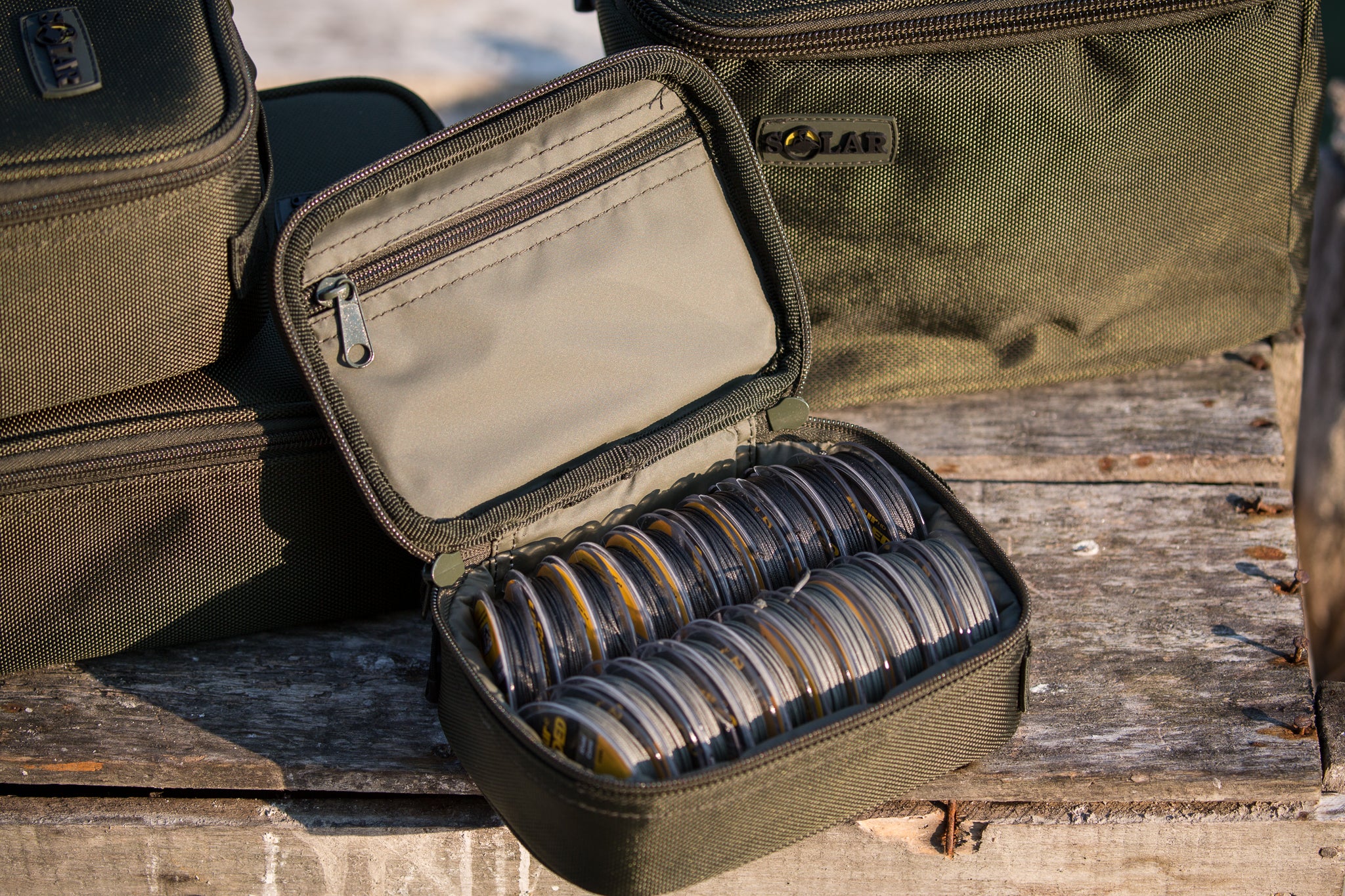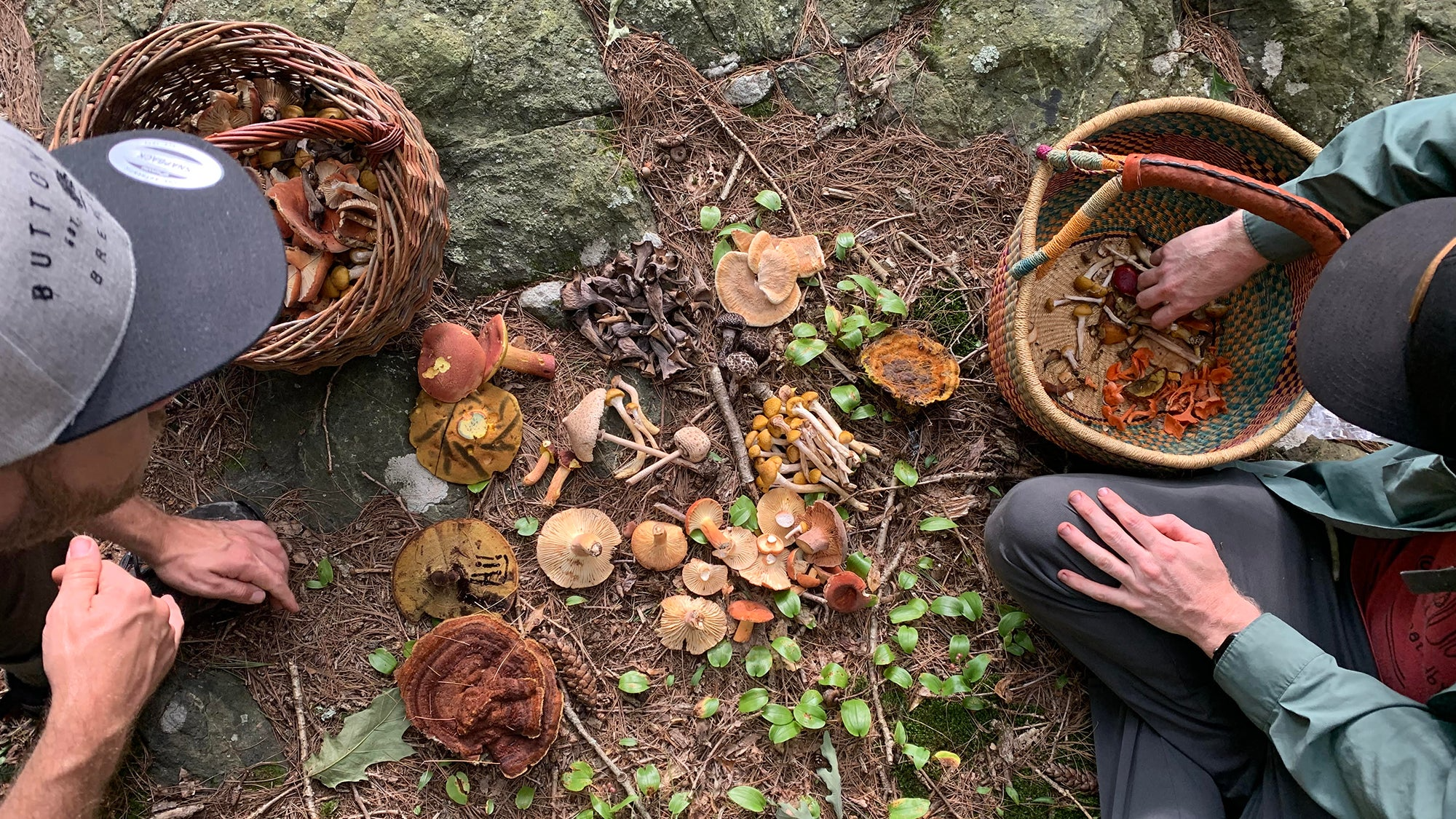Medicinal mushrooms have been used for centuries as a natural remedy for a variety of health conditions. They contain bioactive compounds that have been shown to have anti-inflammatory, anti-viral, and anti-cancer properties, among others. There are many different types of medicinal mushrooms, each with its own unique health benefits.
One of the most popular ways to consume medicinal mushrooms is by making tea or adding them to soups and stews. However, growing your own medicinal mushrooms is becoming increasingly popular due to the many advantages of this method.
How to grow medicinal mushrooms in bags?
One of the biggest advantages of growing medicinal mushrooms in bags is that it is a relatively simple and inexpensive process. All you need is a substrate (usually a mixture of sawdust, straw, or other organic materials), mushroom spawn, and plastic bags. The bags are filled with the substrate and spawn, and then left to incubate in a warm, dark place for several weeks. After this period, the mushrooms will start to grow and can be harvested when they reach maturity.
Another advantage of growing medicinal mushrooms in bags is that it is a very efficient method. Because the bags are sealed and sterile, there is no risk of contamination from other fungi or bacteria. This means that you can produce a large number of mushrooms in a relatively small space, making it ideal for home growers or small businesses.
The process of growing medicinal mushrooms in bags typically involves several steps. First, the substrate and mushroom spawn are mixed together in a large container. This mixture is then transferred to plastic bags, which are sealed and left to incubate in a warm, dark place for several weeks. During this time, the mycelium (the vegetative part of the fungus) will colonize the substrate and form a network of thread-like structures. Once the mycelium has fully colonized the substrate, the bags are opened and the mushrooms are allowed to grow to maturity.
Some of the most popular medicinal mushrooms to grow in bags include Reishi, Shiitake, and Lion's Mane. Reishi mushrooms have been used in traditional Chinese medicine for centuries and are known for their immune-boosting properties. Shiitake mushrooms are a good source of vitamins and minerals, and are also believed to have anti-cancer and anti-inflammatory properties. Lion's Mane mushrooms have been shown to improve cognitive function and memory, and may also have neuroprotective properties.
In conclusion, growing medicinal mushrooms in bags is a simple, efficient, and cost-effective way to produce high-quality mushrooms with a wide range of health benefits. Whether you are a home grower or a small business owner, this method is worth considering if you are interested in natural remedies and healthy living.
Selecting and preparing your substrate
When it comes to growing medicinal mushrooms in bags, selecting and preparing the right substrate is key. The substrate is the material that the mushrooms will grow on, and it is important to choose a substrate that is nutrient-rich and free from contaminants. In this article, we will provide an overview of substrates commonly used for growing medicinal mushrooms in bags, as well as best practices for preparing and sterilizing your substrate.
Substrates for growing medicinal mushrooms in bags
There are several different types of substrates that can be used for growing medicinal mushrooms in bags. Some of the most commonly used substrates include:
-
Sawdust: Sawdust is a popular substrate for growing medicinal mushrooms because it is readily available and easy to work with. It is often combined with other materials, such as wheat bran or rice hulls, to provide additional nutrients for the mushrooms.
-
Straw: Straw is another commonly used substrate for growing medicinal mushrooms. It is also readily available and can be combined with other materials, such as horse manure or coffee grounds, to provide additional nutrients.
-
Coffee grounds: Coffee grounds are a nutrient-rich substrate that can be used to grow a variety of medicinal mushrooms, including oyster mushrooms and lion's mane mushrooms.
-
Hardwood chips: Hardwood chips are a popular substrate for growing shiitake mushrooms. They are often combined with soybean or cottonseed hulls to provide additional nutrients.
Preparing your substrate
Once you have selected your substrate, it is important to prepare it properly before adding the mushroom spawn. Here are some steps you can follow to prepare your substrate:
-
Soak your substrate in water overnight to hydrate it.
-
Drain the excess water and mix in any additional materials, such as bran or hulls.
-
Pack your substrate into bags, leaving enough room for the mushroom spawn to be added.
Best practices for sterilizing your substrate
Sterilizing your substrate is crucial to ensure that it is free from contaminants that can inhibit mushroom growth. Here are some best practices for sterilizing your substrate:
-
Use a pressure cooker or autoclave to sterilize your substrate. This will ensure that it reaches the necessary temperature and pressure to kill off any contaminants.
-
Make sure that your bags are properly sealed before sterilizing. This will prevent any contaminants from entering the bags during the sterilization process.
-
Sterilize your substrate for at least 90 minutes at a temperature of 121°C (250°F). This will ensure that any bacteria, fungi, or other contaminants are killed off.
In conclusion, selecting and preparing the right substrate is crucial for growing high-quality medicinal mushrooms in bags. By choosing a nutrient-rich substrate and following best practices for preparation and sterilization, you can ensure that your mushrooms grow strong and healthy.
Choosing the right mushrooms to grow in bags
If you're interested in growing medicinal mushrooms in bags, it's important to choose the right mushrooms to grow. There are many different varieties of medicinal mushrooms, each with their own unique properties and growing requirements. In this article, we will provide an overview of popular medicinal mushroom varieties, as well as criteria for choosing the right mushrooms to grow in bags and factors to consider when selecting mushroom spawn.
Popular medicinal mushroom varieties
-
Reishi: Reishi mushrooms are one of the most popular medicinal mushrooms, known for their immune-boosting and anti-inflammatory properties. They grow best on hardwood logs, but can also be grown in bags using sawdust or straw as a substrate.
-
Shiitake: Shiitake mushrooms are another popular medicinal mushroom, known for their cardiovascular and immune system benefits. They grow best on hardwood logs, but can also be grown in bags using hardwood chips as a substrate.
-
Lion's mane: Lion's Mane mushrooms are known for their neuroprotective and cognitive-enhancing properties. They grow best on hardwood logs, but can also be grown in bags using sawdust or straw as a substrate.
-
Cordyceps: Cordyceps mushrooms are known for their energy-boosting and endurance-enhancing properties. They grow best on insect larvae, but can also be grown in bags using a substrate of rice or soybeans.
Criteria for choosing the right mushrooms to grow in bags
When choosing mushrooms to grow in bags, there are several criteria to consider. These include:
-
Nutrient requirements: Different mushroom varieties have different nutrient requirements, so it's important to choose a substrate that provides the necessary nutrients for your chosen mushroom.
-
Growing conditions: Different mushroom varieties have different temperature, humidity, and light requirements, so it's important to choose a mushroom that can thrive in the conditions you have available.
-
Market demand: If you're planning to sell your mushrooms, it's important to consider market demand and choose a mushroom variety that is in high demand.
Factors to consider when selecting mushroom spawn
Mushroom spawn is the material that contains the mushroom spores and is used to inoculate the substrate. When selecting mushroom spawn, it's important to consider the following factors:
-
Quality: Choose a high-quality mushroom spawn to ensure strong and healthy mushroom growth.
-
Compatibility: Make sure that the mushroom spawn is compatible with the substrate you have chosen.
-
Quantity: Make sure that you have enough mushroom spawn to inoculate your substrate properly.
In conclusion, choosing the right mushrooms to grow in bags is an important step in the process of growing medicinal mushrooms. By considering criteria such as nutrient requirements, growing conditions, and market demand, as well as selecting high-quality and compatible mushroom spawn, you can ensure that your mushrooms grow strong and healthy.
Inoculating and incubating the bags
Inoculating and incubating the bags is a crucial step in growing medicinal mushrooms. This process involves introducing mushroom spawn into the substrate-filled bags and allowing them to incubate until they are fully colonized with mycelium. Here are some important factors to consider during this stage:
The Process of Inoculating the Bags with Spawn Inoculating the bags with mushroom spawn involves injecting a small amount of spawn into each bag. The spawn then spreads throughout the substrate, colonizing it with mycelium. This process can be done using a variety of methods, such as a syringe, liquid culture, or grain spawn.
Factors to consider when incubating the bags
Incubation is the process of allowing the bags to colonize with mycelium. During this stage, it's important to maintain the right temperature, humidity, and air exchange. The ideal temperature for most medicinal mushrooms is around 75-80°F (24-27°C). Humidity levels should be kept between 80-90%, and air exchange should be regular to prevent the buildup of harmful gases.
Tips for successful incubation
To ensure a successful incubation, here are some tips to keep in mind:
- Choose a clean and sterile environment for incubation to prevent contamination.
- Monitor the temperature and humidity levels regularly using a thermometer and hygrometer.
- Ensure adequate air exchange to prevent the buildup of harmful gases, but be careful not to let in too much fresh air, as this can disrupt the mycelium growth.
- Be patient and avoid disturbing the bags during incubation. Any disruption can slow down mycelium growth and increase the risk of contamination.
By following these guidelines, you can ensure a successful inoculation and incubation process, leading to healthy and thriving medicinal mushrooms.
Fruiting the bags
Once the bags have been fully colonized with mycelium, it's time to induce fruiting. This stage involves creating the right conditions for the mushrooms to form and mature. Here are some important factors to consider during the fruiting stage:
How to induce fruiting in your bags?
To induce fruiting, the bags must be exposed to certain environmental conditions, such as increased humidity and reduced carbon dioxide levels. This can be done by creating a fruiting chamber, which is essentially a controlled environment that mimics the natural conditions required for fruiting.
Best practices for maintaining humidity and temperature during fruiting
During the fruiting stage, it's important to maintain high humidity levels and a slightly lower temperature than the incubation stage. The ideal temperature for most medicinal mushrooms is between 65-75°F (18-24°C), and humidity levels should be kept between 90-95%. To maintain these conditions, you can use a humidifier and temperature controller. It's also important to ensure proper air exchange to prevent the buildup of harmful gases.
Common issues and how to troubleshoot them
One common issue that can arise during fruiting is a lack of fruiting bodies or stunted growth. This can be caused by a variety of factors, such as improper humidity or temperature levels, poor air exchange, or inadequate lighting. To troubleshoot this issue, check the environmental conditions and adjust them accordingly. It's also important to ensure that the bags are receiving enough light, as this is necessary for proper fruiting body formation.
Another issue that can occur is contamination, which can be caused by a variety of sources, such as spores in the air or improper sterilization of the substrate. To prevent contamination, it's important to follow strict sterilization protocols and maintain a clean growing environment.
By following these guidelines, you can successfully induce fruiting and troubleshoot common issues during the fruiting stage, leading to a bountiful harvest of healthy and nutritious medicinal mushrooms.
Harvesting and storing your mushrooms
After weeks of patiently waiting, it's finally time to harvest your medicinal mushrooms. Here are some tips for harvesting and storing your mushrooms:
How to tell when your mushrooms are ready to harvest?
The timing of the harvest depends on the specific mushroom variety being grown. Generally, the mushrooms are ready to harvest when the caps have fully opened and the gills underneath are visible. For some varieties, the caps may start to flatten out or slightly curl upwards. It's important to harvest the mushrooms before the caps start to turn downward, as this indicates that they are overripe.
Best practices for harvesting
When harvesting, it's important to use clean, sharp tools to avoid damaging the mycelium or other mushrooms in the bag. Using a clean pair of scissors, gently snip the mushroom at the base of the stem. Avoid pulling or twisting the mushroom, as this can damage the mycelium and reduce the yield of future flushes.
Tips for storing your mushrooms
After harvesting, it's important to store the mushrooms properly to ensure their freshness and quality. Ideally, the mushrooms should be stored in a paper bag or container that allows for air circulation, and kept in the refrigerator at a temperature between 34-38°F (1-3°C). Avoid storing the mushrooms in a plastic bag, as this can cause them to become slimy and spoil more quickly.
It's important to use the mushrooms within a week or two of harvesting, as they will start to lose their flavor and nutritional value over time. If you have excess mushrooms, consider drying or freezing them to preserve their quality for later use.
By following these guidelines, you can successfully harvest and store your medicinal mushrooms, ensuring that they maintain their quality and nutritional value.
Scaling up your operation
If you've successfully grown medicinal mushrooms in bags on a small scale, you may be interested in scaling up your operation to increase your yield. Here are some tips for increasing the number of bags you grow, automating parts of the process, and avoiding common pitfalls.
Tips for increasing the number of bags you grow
One way to increase the number of bags you grow is to purchase or make a larger sterilization vessel. This will allow you to sterilize more bags at once, increasing your yield without significantly increasing the amount of time you spend on the process. Additionally, consider optimizing your growing space by using shelving or other vertical growing systems to increase the number of bags you can grow in a single area.
Another option is to stagger your inoculation and incubation times. By starting new bags at different times, you can create a steady supply of fresh mushrooms without having to harvest all of your bags at once.
How to automate parts of the process?
As you scale up your operation, it may become impractical to manually inoculate and incubate each bag. Consider investing in an automated bag filler or a mushroom-growing system that uses pre-inoculated bags. These systems can save time and effort, while also reducing the risk of contamination.
Another option is to automate the temperature and humidity control in your growing space. This can be achieved by using a grow tent or greenhouse, which can be equipped with a thermostat, humidifier, and fan to maintain optimal growing conditions.
Common pitfalls to avoid
One of the most common pitfalls in scaling up a mushroom-growing operation is contamination. As you increase the number of bags you grow, it's important to maintain strict sterilization protocols and to monitor your bags closely for signs of contamination.
Another common issue is poor ventilation, which can lead to high humidity levels and increased risk of contamination. Be sure to provide adequate air flow in your growing space, and consider using a dehumidifier to maintain optimal humidity levels.
Finally, be sure to keep detailed records of your growing process, including the number of bags inoculated, incubation times, and harvest yields. This will help you identify areas for improvement and optimize your growing process over time.
By following these tips, you can successfully scale up your mushroom-growing operation and increase your yield, while avoiding common pitfalls and maintaining the quality of your mushrooms.
Conclusion
Growing medicinal mushrooms in bags is a highly beneficial and rewarding practice. It offers a way to cultivate a variety of medicinal mushrooms right at home, with relatively low cost and minimal equipment required.
In this article, we covered the basics of growing medicinal mushrooms in bags, from selecting the right substrate and mushroom variety, to inoculating and incubating the bags, and finally, to harvesting and storing the mushrooms. We also discussed ways to scale up your operation and automate parts of the process.
Recap of the benefits of growing medicinal mushrooms in bags:
• Access to fresh, organic, and locally grown medicinal mushrooms • Cost-effective and easy to set up • Minimal equipment required • Can be done at home or in small spaces • Customizable to your needs and preferences • Sustainable and eco-friendly • Provides a rewarding hobby and potential income stream
Final thoughts and recommendations:
Growing medicinal mushrooms in bags can be a fun and fulfilling hobby or even a profitable business venture. It is important to start small and gradually scale up, while being mindful of best practices and common pitfalls. With proper planning, preparation, and care, anyone can grow their own high-quality medicinal mushrooms right at home.
FAQs
-
How long does it take to grow medicinal mushrooms in bags?
The length of time it takes for medicinal mushrooms to grow in bags can vary depending on several factors, including the type of mushroom, the substrate used, and the growing conditions. However, most varieties take anywhere from two to four weeks to colonize the substrate, and then an additional two to four weeks to fruit.
-
What types of bags should I use for growing medicinal mushrooms?
For growing medicinal mushrooms in bags, it is recommended to use autoclavable, heat-resistant, and food-grade bags made from polypropylene or polyethylene. These bags come in various sizes and shapes, and can be easily purchased online or at garden supply stores.
-
How do I know if my substrate is properly sterilized?
Sterilizing your substrate is crucial for successful mushroom cultivation, as it kills off any potential contaminants that could harm or compete with your mushrooms. To know if your substrate is properly sterilized, you can use a sterilization indicator like a self-adhesive autoclave tape or a temperature-sensitive indicator strip. These indicators change color or display markings when exposed to high heat and pressure, indicating that the sterilization process has been completed.
-
Can I reuse my bags for growing more mushrooms?
While it is possible to reuse bags for growing more mushrooms, it is not recommended as it increases the risk of contamination and decreases the overall yield. It is best to use new bags for each batch of mushrooms.
-
What is the most common mistake beginners make when growing medicinal mushrooms in bags?
The most common mistake beginners make when growing medicinal mushrooms in bags is not properly sterilizing their substrate, leading to contamination and poor mushroom growth. It is important to follow proper sterilization procedures and maintain a clean and sterile growing environment to ensure successful mushroom cultivation.


























